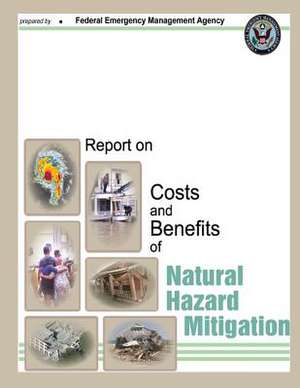Report on Costs and Benefits of Natural Hazard Mitigation
Autor Federal Emergency Management Agencyen Limba Engleză Paperback
Preț: 114.30 lei
Nou
Puncte Express: 171
Preț estimativ în valută:
21.87€ • 23.75$ • 18.37£
21.87€ • 23.75$ • 18.37£
Carte disponibilă
Livrare economică 02-16 aprilie
Preluare comenzi: 021 569.72.76
Specificații
ISBN-13: 9781482512090
ISBN-10: 1482512092
Pagini: 62
Dimensiuni: 216 x 280 x 3 mm
Greutate: 0.17 kg
Editura: CREATESPACE
ISBN-10: 1482512092
Pagini: 62
Dimensiuni: 216 x 280 x 3 mm
Greutate: 0.17 kg
Editura: CREATESPACE
